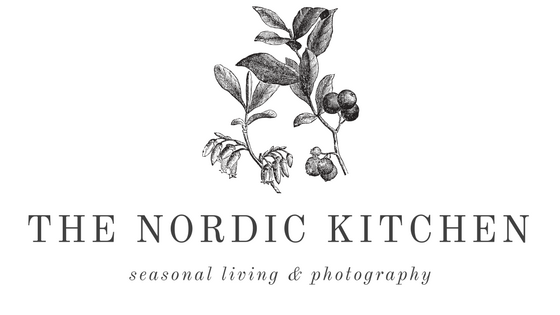No-knead everyday bread: long rise for maximum flavor
Our bread baking Sundays continue! It’s only our second Sunday doing this, so I guess it’s too early to call it a routine just yet. But we’re getting there. Just a couple more weeks and baking will probably be a habit rather than a spontaneous activity for gloomy days.
Besides baking, there hasn’t been much going on in our house. Both K and I went down with the worst cold ever during the weekend and we’ve just started to get better. Otherwise we’re doing good, still waiting for our baby boy to join us. It seems like he’s having a good time inside my belly though. And to be honest I’m glad he didn’t decide to join us during the weekend. Giving birth while being sick cannot be very pleasant…
Oh, and I turned 28 years old (thanks for all the birthday wishes on Instagram). And that’s probably all the news from my little corner of the world. I’m planning blog posts for spring, working on a couple of exciting projects, and planning a couple of DIY projects for my business. All while drinking a lot of tea, taking naps whenever I feel I need it, and trying new recipes just for fun. I’m also making sure to practice yoga and go for a walk every day. And eating lots of yummy, home made bread of course.
Speaking of bread again. We’ve been experimenting with new recipes, but also used a couple of old favorites. Because, even if we’re just starting to bake on a weekly basis, I have been baking (spontaneously) for years. I have a couple of favorite recipes I love to come back to, but on the other hand there’s nothing like developing a new delicious recipe. I’m not a pro when it comes to baking, very far from it, but I’ve learned a few things from my kitchen escapades.
The first thing is that the flour is really important. Using high-quality flour makes all the difference, believe me. At least in Sweden, flour is really cheap and even if you buy a high-quality flour it doesn’t cost that much. When I started out, I bought the cheapest flour I could find (hey, I was a student back then), but over the years I’ve amped up my flour game. The flour I use today is from a mill close to Stockholm, it’s stone ground, organic, has no additives and the cereals has been grown in Sweden. Yet I only pay like 30 SEK (about 3 bucks) for 2 kgs. And that’s about as much as one loaf of bread costs at the store. And 2 kgs of flour is enough for a lot more than one loaf of bread if you make it yourself. So, invest (in lack of a better word) in a good quality flour if you can. It’s worth it.
The second thing is that letting your dough rise for many hours (14-20 h) makes the bread much tastier. This doesn’t only apply to sourdough bread, but to all bread. This gives the yeast a chance to work its magic and the result is a flavorful and fluffy bread. Are you drooling yet?
No-knead everyday bread
1 loaf
10 g fresh yeas
3 1/2 dl | 350 ml water
2 dl | 200 ml rye flour
3 dl | 300 ml spelt flour
3 1/2 dl | 350 ml wheat flour + about 1 dl (100 ml) extra for baking
1/2 tbsp salt
Instructions
-
Heat the water to 37°C.
-
In a baking bowl, crumble the yeast and add the water. Stir until the yeast is dissolved.
-
Add all the dry ingredients to the bowl and stir to combine.
-
Cover the bowl and let the dough rise for 14-20 hours.
-
Lightly flour a work surface and place the dough on it.
-
Quickly and rather gently, shape the dough into a ball.
-
Coat a cotton towel with flour (be generous with the amount of flour you’re using), place the dough in the towel and place in a proofing basket. Cover with another cotton towel and let rise for 1-2 hours.
-
Preheat the oven to 225°C.
-
It’s time to bake the bread and you now have two options. You can either transfer the dough to a cast iron pot (preheated) or you can cover a baking sheet with parchment paper and bake it like that (that’s what I did when baking the bread on the photos).
-
Baking in a cast iron pot: place the pot in the oven as it’s heating up. When the dough is ready, transfer it to the warm pot (it doesn’t have to look pretty, it’ll get a nice shape while baking). Cover the pot with a lid and bake in the lower part of the oven for about 30 minutes. Remove the lid and bake for another 15-30 minutes, or until golden brown.
-
Baking using a baking sheet: transfer the dough to a parchment paper covered baking sheet and bake in the lower part of the oven for about 1 hour, or until golden brown.
-
-
Let the bread cool before serving.








